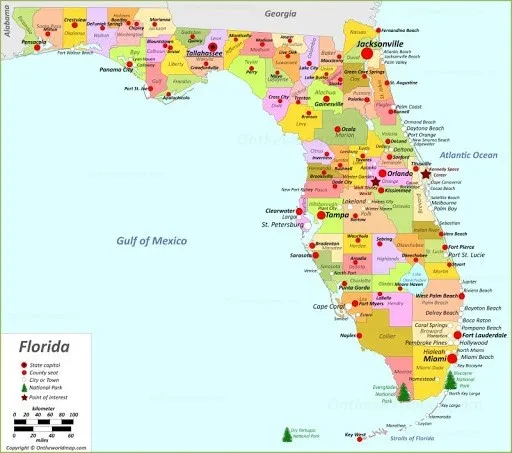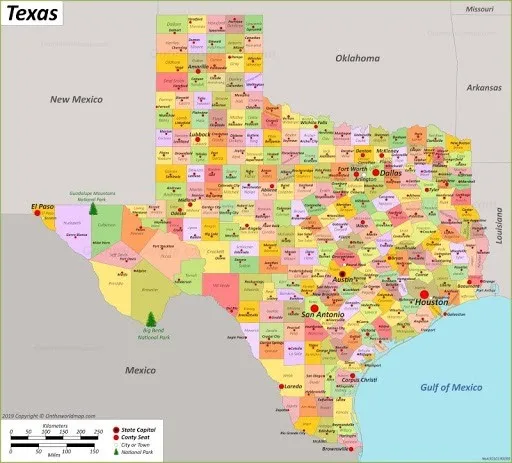Welcome to the Pryor Mountains, a hidden gem nestled on the Montana-Wyoming border, where the raw beauty of nature and rich history intertwine to create an unforgettable travel experience. If you’re seeking a destination off the beaten path, away from the hustle and bustle of the city, and immersed in the vast expanse of the American West, the Pryor Mountains are the perfect choice.
The Pryor Mountains are more than just a tourist spot; they are a treasure trove of biodiversity, a rich cultural heritage, and a paradise for those passionate about exploration. From majestic limestone cliffs and mysterious caves to lush pine forests and sprawling grasslands, this place promises to offer you wonderful experiences and memorable moments.
In this article, “Du lịch khắp thế gian” (Travel Around the World) will accompany you to discover everything about the Pryor Mountains. We will provide a detailed travel guide, from basic information about geography, history, and culture, to exciting tourist activities, helpful tips, and important notes to ensure you have a complete and meaningful trip. Let’s begin our journey to explore the enchanting Pryor Mountains!
Overview of the Pryor Mountains Nature Area
The Pryor Mountains, also known as the Pryor Mountain Range, are a small mountain range located in southern Montana and northern Wyoming, in the United States. This range is renowned for its pristine natural beauty, diverse ecosystems, and rich historical and cultural significance.
Geographical Location: The Pryor Mountains are situated north of the Basin and Range Province and east of the Rocky Mountains, spanning an area of approximately 150,000 acres (610 km²). The northern edge of the range borders the Bighorn River and Bighorn Lake, the eastern edge borders the Bighorn Basin, and the southern and western edges border vast grasslands.
Geological History: The Pryor Mountains were formed during the Paleozoic and Mesozoic eras, with geological structures primarily composed of limestone and dolomite. Complex geological processes have created towering cliffs, deep caves, and uniquely shaped rock formations, lending a majestic and diverse beauty to the landscape.
Diverse Ecosystem: The Pryor Mountains are a meeting point of various ecosystems, from shrublands, pine forests, and spruce forests to high mountain grasslands and wetlands. The diversity of terrain and climate has fostered the development of a rich and unique flora and fauna. It is home to many rare wildlife species such as the Pryor Mountain wild horse, bighorn sheep, black bears, deer, bobcats, and numerous bird species.
Cultural and Historical Value: The Pryor Mountains hold a long-standing historical and cultural imprint. This area was inhabited by Native American peoples thousands of years ago, with many archaeological sites discovered. In the 19th century, the Pryor Mountains became an important location in the history of the American West, associated with explorations, settlements, and territorial disputes.
Nature Conservation Area: Recognizing the special natural and cultural values, a large portion of the Pryor Mountains has been protected and managed by the U.S. Bureau of Land Management (BLM) and the U.S. Forest Service. This area is recognized as the Pryor Mountain Wild Horse Range and the Bighorn Canyon National Recreation Area, attracting visitors to explore, discover, and experience the wilderness.

Discover Exciting Tourist Activities in the Pryor Mountains
The Pryor Mountains are an ideal destination for those who love nature travel, adventurous exploration, and cultural and historical discovery. Here are some notable tourist activities you shouldn’t miss when visiting this mountain region:
1. Witness the Pryor Mountain Wild Horses
One of the biggest attractions of the Pryor Mountains is the world-renowned Pryor Mountain wild horse herd. This is a unique breed of wild horse, descended from Spanish horses brought to North America in the 16th century. This herd lives freely in the Pryor Mountain Wild Horse Range, and you can easily spot them during your visit.
For the best chance to see the wild horses, you should visit the Pryor Mountains in spring or autumn, when the weather is pleasant and the horses are more active. You can drive along the trails within the preserve, or hike to explore the wilderness and search for the horses. Remember to keep a safe distance and not disturb their wildlife.
2. Trekking and Hiking
The Pryor Mountains are a paradise for trekking and hiking enthusiasts. There are many trails with varying levels of difficulty, suitable for all fitness levels and experience. You can choose short, easy trails to explore the surrounding scenery, or challenge yourself with longer trails that require more skill and endurance.
Some popular trekking trails in the Pryor Mountains include:
- Tillett Ridge Trail: This 8-mile (12.9 km) trail will take you to the top of Tillett Ridge, where you can enjoy panoramic views of the Pryor Mountains and the Bighorn Basin.
- Bear Canyon Trail: This 6-mile (9.7 km) trail leads you through the beautiful Bear Canyon, with towering cliffs and lush green vegetation.
- Big Pryor Mountain Trail: This is the most challenging trail in the Pryor Mountains, 10 miles (16 km) long and leading to the summit of Big Pryor Mountain, the highest peak in the Pryor Range.
3. Cave Exploration
The Pryor Mountains are famous for their rich and diverse limestone cave system. There are hundreds of caves, both large and small, with many unique shapes and complex structures. Some caves have been explored and opened to visitors, while many others still hold unsolved mysteries.
The most famous cave in the Pryor Mountains is Pryor Mountain Cave, also known as the Ice Cave. This cave maintains a temperature below freezing year-round, even in the hot summer. Inside the cave, you can admire beautiful ice columns, stalagmites, and stalactites, formed thousands of years ago.
In addition, you can also explore other caves such as Booth Cave, Gardner Cave, and Mystery Cave, each with its own unique features and beauty.
4. Camping and Picnics
The Pryor Mountains are an ideal location for camping and picnicking. There are many campsites equipped with full amenities, such as tables, fire pits, restrooms, and drinking water. You can pitch your tent and enjoy the fresh natural space, stargaze at night, and wake up to the cheerful chirping of birds in the morning.
If you don’t like camping, you can also opt for a day picnic. The Pryor Mountains have many picturesque picnic areas, with green lawns, shady trees, and stunning natural scenery. You can bring food, drinks, and organize a fun picnic with family and friends.
5. Bird and Wildlife Watching
The Pryor Mountains are an attractive destination for those who love bird and wildlife watching. It is home to over 200 different bird species, from birds of prey like golden eagles and red-tailed hawks, to small birds like sparrows, woodpeckers, and hummingbirds.
Besides birds, the Pryor Mountains also have many other wildlife species such as bighorn sheep, black bears, deer, bobcats, coyotes, and red foxes. You can easily spot them during your visit, especially in the early morning or late afternoon, when animals are most active.

Ideal Time to Visit the Pryor Mountains
The best time to visit the Pryor Mountains is during spring (May – June) and autumn (September – October). In spring, the weather is warm and pleasant, trees are lush green, and wildflowers bloom everywhere. This is also when the wild horses are most active after a long winter.
Autumn is also a great time to visit the Pryor Mountains. The weather is cool and dry, and the leaves turn yellow and red, creating a romantic and poetic scene. This is also the breeding season for many wildlife species, and you may be lucky enough to spot newborn fawns or lambs.
Summer (July – August) in the Pryor Mountains is quite hot and dry, with temperatures potentially reaching 35 – 40 degrees Celsius. However, this is also the peak tourist season, with many activities and events taking place. If you visit in the summer, prepare cool clothing, sunscreen, hats, and drink enough water to avoid heatstroke.
Winter (November – April) in the Pryor Mountains is very cold and snowy. Many roads and attractions may be closed due to bad weather. However, if you enjoy winter activities like skiing, snowshoeing, or admiring snow-covered landscapes, winter is also an interesting option.
Directions to the Pryor Mountains
The Pryor Mountains are located in a rather remote area, far from major cities and international airports. However, getting here is not too difficult if you plan and prepare carefully.
By Plane: The nearest airport to the Pryor Mountains is Billings Logan International Airport (BIL) in Billings, Montana, about a 2-hour drive away. From Billings Airport, you can rent a car or take a bus to towns near the Pryor Mountains such as Lovell, Wyoming or Bridger, Montana.
By Car: Car is the most popular and convenient means of transportation to reach the Pryor Mountains. You can drive from nearby cities such as Billings, Sheridan, Cody, or Red Lodge. The roads to the Pryor Mountains are relatively easy to navigate, mainly highways and paved roads. However, some trails within the preserve may be dirt or gravel roads, and you should use a high-clearance or 4-wheel drive vehicle for safer travel.
By Bus: There are some local bus routes serving towns near the Pryor Mountains. However, buses are not an ideal means of transportation for exploring the Pryor Mountains, as attractions are often far apart and public transport is limited.
Important Notes When Visiting the Pryor Mountains
To have a safe and fulfilling trip to the Pryor Mountains, you should note the following:
- Prepare good physical fitness: If you plan to trek, hike, or participate in other outdoor activities, ensure you are in good health and physical condition. The Pryor Mountains have diverse terrain and varying altitudes, and some trails can be quite challenging.
- Bring appropriate clothing: The weather in the Pryor Mountains can be unpredictable, especially in high mountain areas. Bring warm clothes, windproof jackets, hats, gloves, and specialized hiking boots.
- Prepare enough water and food: There are few tourist service facilities in the Pryor Mountains, especially within the preserve. Bring enough drinking water, snacks, and lunch if you plan to hike or camp.
- Use sunscreen and insect repellent: The sun’s rays are very strong in high mountain areas, use high SPF sunscreen to protect your skin from sunburn. Also, bring insect repellent to avoid mosquito, tick, and other insect bites.
- Respect nature and wildlife: The Pryor Mountains are a pristine and precious natural area. Maintain general hygiene, do not litter, do not make loud noises, and do not disturb wildlife.
- Comply with preserve regulations: The Pryor Mountains have some regulations and guidelines for visitors, such as not feeding wildlife, not building campfires in unauthorized areas, and not bringing pets into the wild horse range. Learn and comply with these regulations to protect nature and ensure your safety.
- Inform relatives about your itinerary: Before starting your trip to the Pryor Mountains, inform your relatives or friends about your itinerary, including locations, times, and planned activities. This will help them contact you in case of emergency.

Conclusion
The Pryor Mountains are a wonderful nature travel destination, offering visitors unique and unforgettable experiences. From watching the majestic wild horse herd, trekking on magnificent trails, exploring mysterious caves, to camping in the wilderness and observing diverse wildlife, the Pryor Mountains promise to satisfy every traveler, even the most discerning ones.
If you are looking for a novel destination, away from the hustle and bustle of the city and immersed in vast nature, the Pryor Mountains are the perfect choice. Plan your trip today and discover the pristine and captivating beauty of this mountain region. “Du lịch khắp thế gian” (Travel Around the World) wishes you a fun and meaningful trip!